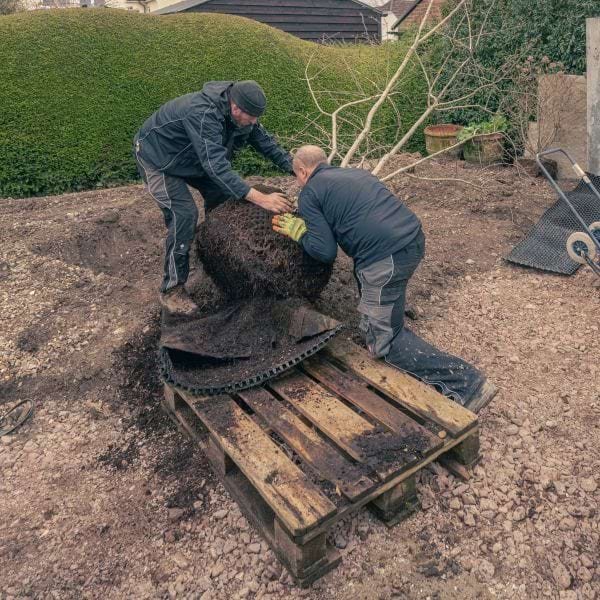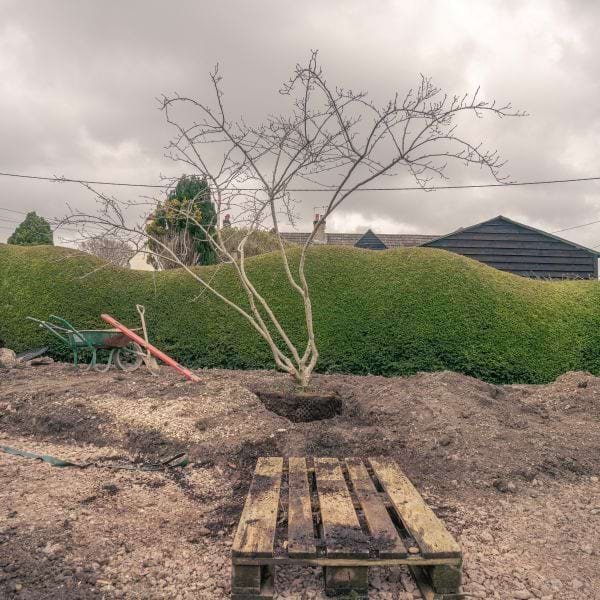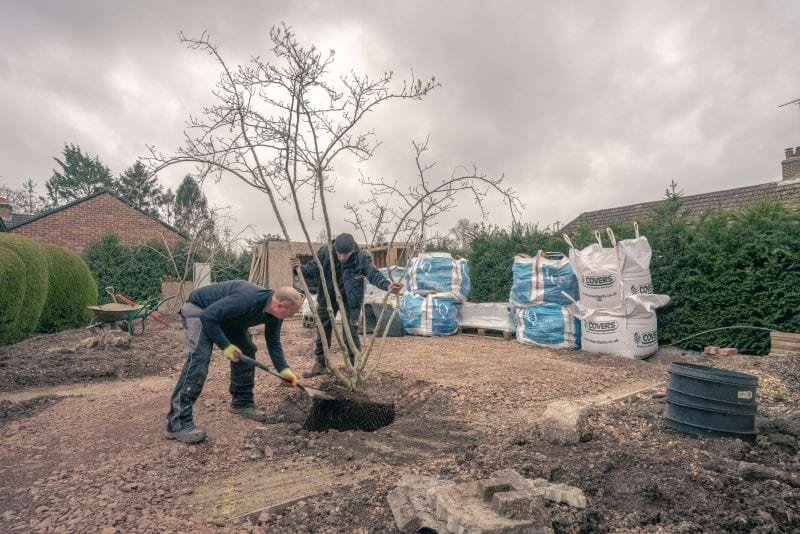Designer turned client
Most of my time is spent thinking about clients’ gardens, but I recently decided it was time to re-think our own family outside space and start with a completely blank canvas. I am often asked what I have in my garden, so, I plan to share the journey of my garden re-design in a blog series from conception to installation and beyond to see how it matures through the seasons.
My ambition is to create a garden that can cope with extremes in weather; prolonged periods of below average temperatures during Winter down to -20 and able to tolerate periods of intense heat. Once established, the ambition is for the garden to be drought tolerant and thrive without irrigation.
This garden is south facing and very sheltered, which means that the space can get very hot in Summer. I would like to introduce small trees to the space to provide both full and dappled shade to areas that my family and I will be using to relax in. I plan to use three species of tree in the garden: Multistemmed Mespilus germanica, Arbutus unedo, & Genista aetnensis. Historically, we have promoted Amelanchier lamarckii as a small-medium sized multistemmed tree, but we are looking to plant a variety of tree species that share some of the same characteristics. The Medlar is a beautiful tree which produces small fruits that can be used once ripe. I have recently learned that Arbutus unedo was at one point a widespread native species in the UK prior to the Ice Age. However, forests of Arbutus still exist in Ireland. Genista is an upright multistemmed leguminous species that has unusual foliage and yellow flowers.
“I aim to make the garden as biodiverse as possible”
I aim to make my garden as biodiverse as possible, attracting many more species of invertebrates into the space. Being designed to both look aesthetically pleasing and attract wildlife, I also want it to be as aromatic as possible. At Alaster Anderson we are considering the sustainability of the gardens we create and I am exploring this in my own garden by building low level dry stone walls which will bring contemporary structure to the space while providing habitat for a range of species through the nooks and crannies in between the stones. I will use Purbeck Stone from Dorset to create these walls.
I would like to have ecological surveys done of my garden so that I am able to monitor and record the findings regarding the diversity of species and numbers in my garden over time. These findings would be used to give evidence and statistics when proposing similar garden installation works and the benefits of this type of planting scheme in comparison to the average garden in the South East.
My wife, Imogen, and I are keen to experiment with unusual plants that aren’t typically grown and sold in the UK at this time. We have been inspired by Le Jardin Sec which was created by Olivier and Clara Filippi, as they have spent 30 years experimenting with plants that require no irrigation. We would like our garden to evoke the same feelings of relaxation that we have experienced as a family when on holiday in Greece. Imogen’s passion for floristry has encouraged us to plant a range of species that are colourful and feminine while suiting the other requirements of the garden.
Problems with the original garden:
The previous garden was built during the covid lockdowns, but I was never truly happy with it as we decided at the time to include a lawn area for our children and dog. What we found was that the lawn become muddy during the winter as there were lots of worm casts. This was partly because of our existing garden soil having a very high organic content. We also felt that we are now in a position to be more experimental with our planting ideas and the way to achieve this was by having a radical rethink of the design layout.
Limitations in installation:
Access to my back garden is through the house only, and Imogen and I want to entirely build the garden ourselves to give us full ownership of it. To my neighbour’s amusement, over the Easter period I craned 30 tonnes of materials and 2 trees into the rear garden. To do this we encountered lots of logistical issues, but with our regular crane company’s assistance we completed the lift in two days.
I look forward to sharing the progress of the garden as it develops, please keep an eye out for more blogs in this series.
If you would like to rethink your garden, we would love to help. You can reach us on 0207 305 7183 or email at enquire@alasteranderson.com









